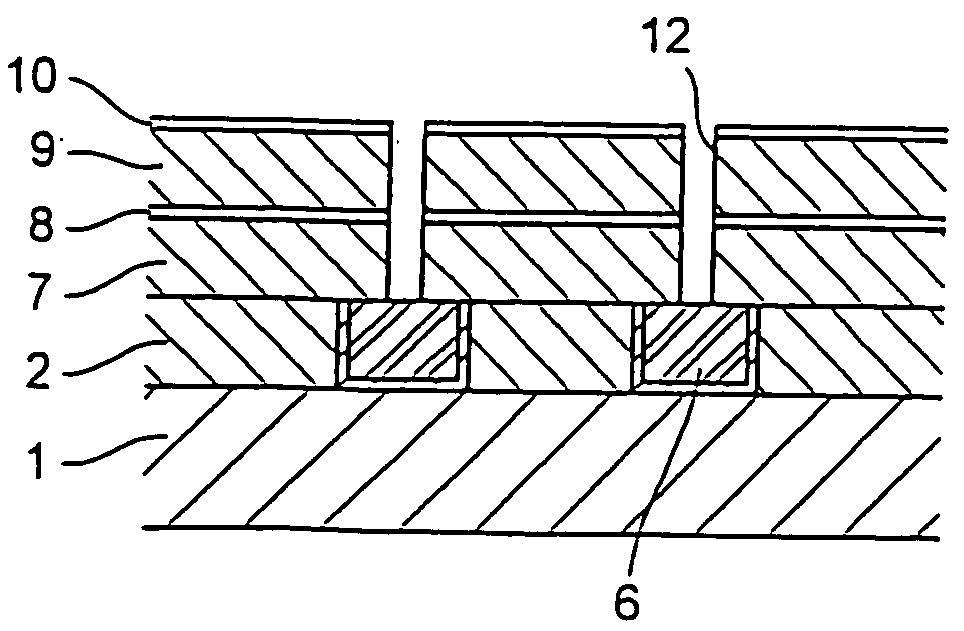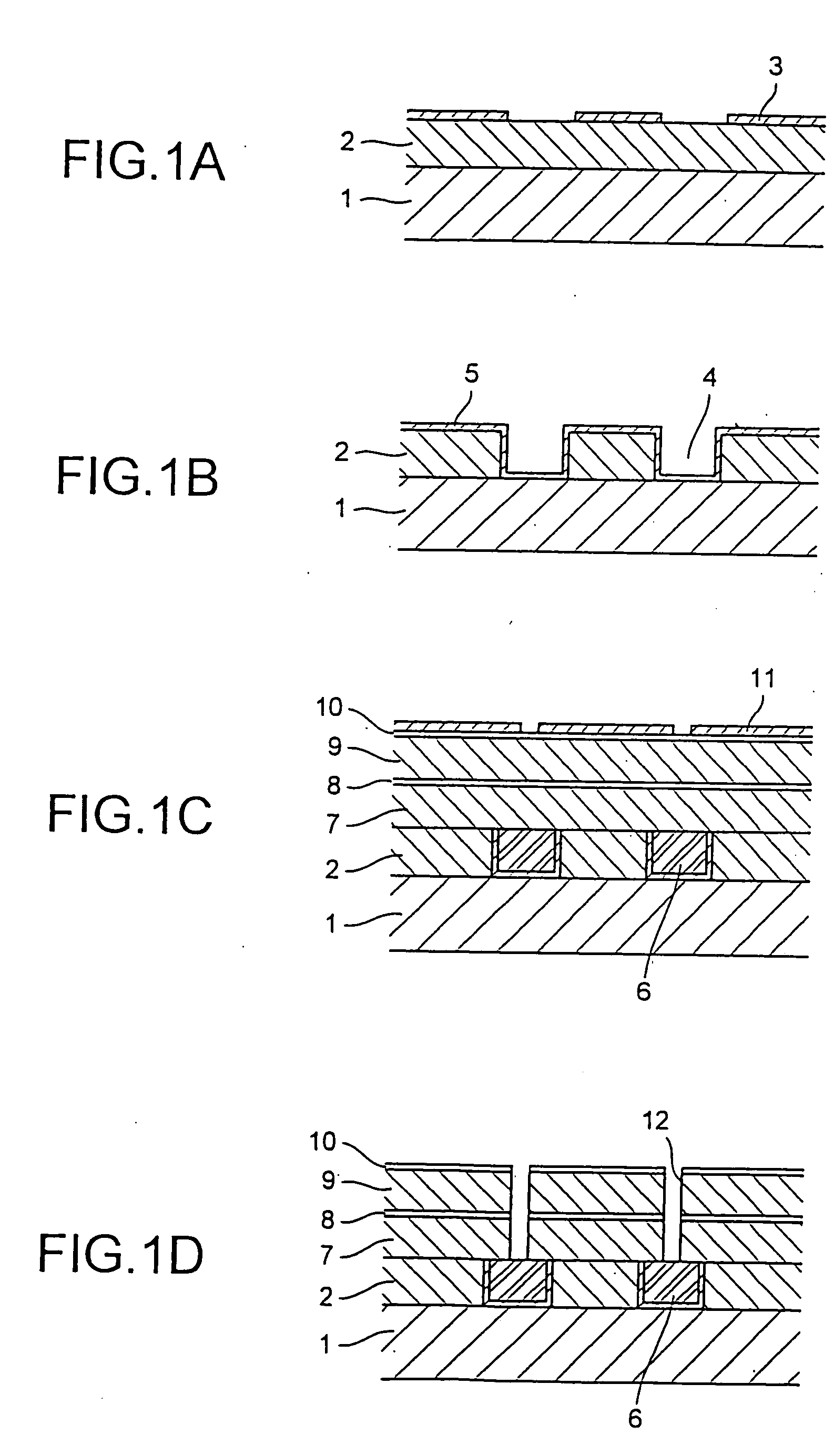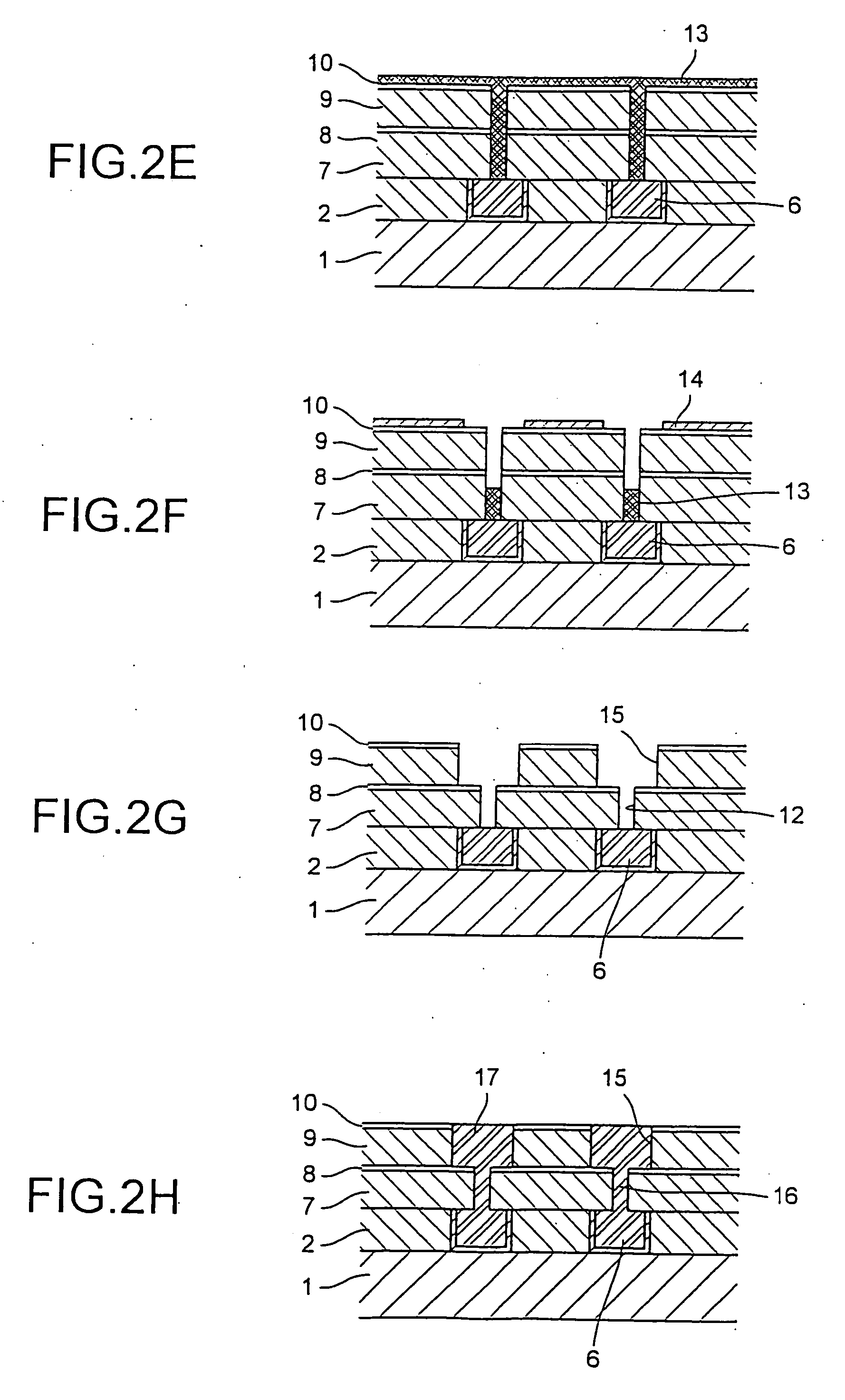Semiconductor multilayer interconnection forming method
a multi-layer wiring and semiconductor technology, applied in semiconductor/solid-state device manufacturing, basic electric elements, electric instruments, etc., can solve the problems of copper not being able to be used for the conventional sequential formation method of multi-layer wiring, difficult to reduce production cost, and difficult to give etching, etc., to achieve high storage stability, reduce storage stability, and high removal ability
- Summary
- Abstract
- Description
- Claims
- Application Information
AI Technical Summary
Benefits of technology
Problems solved by technology
Method used
Image
Examples
example 1
[0087] Four layers, i.e., an SiN layer, a first low dielectric material layer composed of a hydrogen silsesquioxane-based low dielectric material (trade name: OCD T-12 supplied from Tokyo Ohka Kogyo Co., Ltd.), an SiN layer and a second dielectric material layer composed of the hydrogen silsesquioxane-based low dielectric material (trade name: OCD T-12 supplied from Tokyo Ohka Kogyo Co., Ltd.) were sequentially laminated on a substrate on which a copper wiring had been formed to form an interlayer insulating layer of 6000 angstroms.
[0088] A first reflection preventing film with a film thickness of 770 angstroms composed of ARC-29 (supplied from Brewer Science) was formed on the above interlayer insulating layer, a first photoresist layer with a film thickness of 4000 angstroms was formed thereon, and exposure and development were given. The first photoresist layer was formed using a resist composition (trade name: TArF-7a21 supplied from Tokyo Ohka Kogyo Co., Ltd.) whose major ingr...
examples 2 to 5
[0096] Each dual damascene structure was formed in the same way as in Example 1 except that the first and second reflection preventing films in the Example 1 were constituted from the following four resin compositions.
[0097] As the reflection preventing film-forming materials, the following resin compositions of (A), (B), (C) and (D) were prepared.
[0098] (A) Resin composition where a resin component composed of ethyl p-styrenesulfonate was dissolved in a solvent composed of γ-butyrolactone / ethyl lactate (2:8) and a solid concentration was adjusted to 6% by weight.
[0099] (B) Resin composition where a resin component composed of ethyl p-styrenesulfonate:hydroxyethyl acrylate (=5:5) and Cymel 1172 (tetramethylol glycoluril supplied from Mitsui Cyanamid Co., Ltd.) at an amount equivalent to 20% by weight based on the resin component amount were dissolved in the solvent composed of ethyl lactate and the solid concentration was adjusted to 6% by weight.
[0100] (C) Resin composition whe...
example 6
[0104] A dual damascene structure was formed in the same way as in Example 1 except that the first and second reflection preventing films in Example 1 were constituted from the following resin composition.
[0105] Tetraisopropoxy titanium (100 g) was dissolved in 338 g of ethanol, and then 121 g of acetic acid and 357 g of acetyl acetone were added to obtain a mixture. This mixture was stirred for 4 hours and subsequently left stand for 16 hours to obtain a solution of 10% polytitanoxane.
[0106] Subsequently, 113 g of methanol, 312 g of acetyl acetone and 324 g of acetic acid were added to 324 g of tetraethoxysilane to obtain a mixture. This mixture was stirred for 6 hours and subsequently left stand for 16 hours to obtain a solution of 9% polysiloxane.
[0107] A resin mixed solution obtained by mixing the polytitanoxane solution and the polysiloxane solution at 1:1 and diluting with butyl cellosolve was a material for forming the first and second reflection preventing films correspon...
PUM
 Login to View More
Login to View More Abstract
Description
Claims
Application Information
 Login to View More
Login to View More - R&D
- Intellectual Property
- Life Sciences
- Materials
- Tech Scout
- Unparalleled Data Quality
- Higher Quality Content
- 60% Fewer Hallucinations
Browse by: Latest US Patents, China's latest patents, Technical Efficacy Thesaurus, Application Domain, Technology Topic, Popular Technical Reports.
© 2025 PatSnap. All rights reserved.Legal|Privacy policy|Modern Slavery Act Transparency Statement|Sitemap|About US| Contact US: help@patsnap.com



